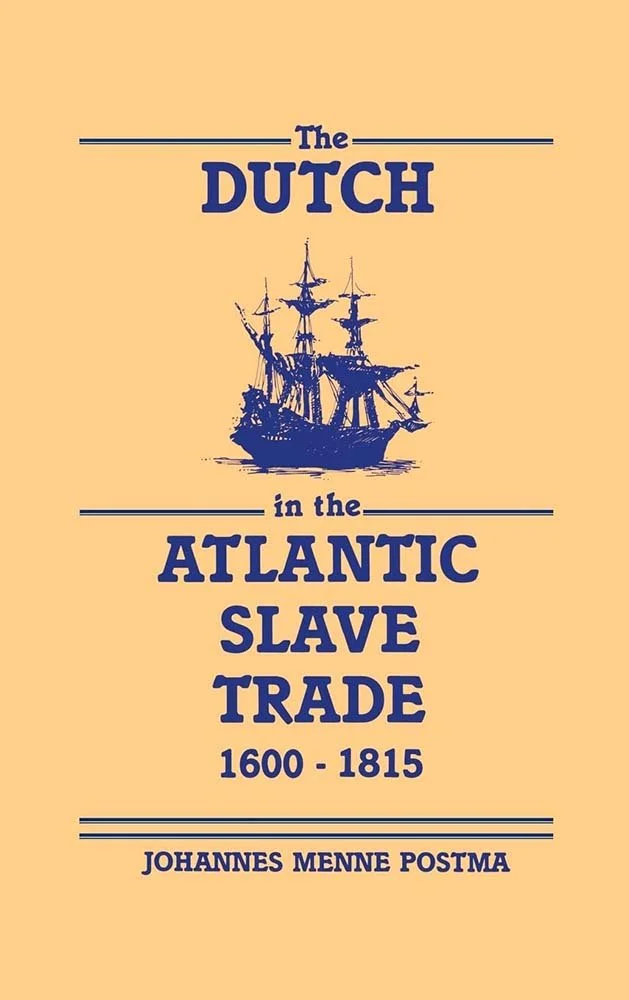Presenting a thorough analysis of the Dutch participation in the transatlantic slave trade, this book is based upon extensive research in Dutch archives. The book examines the whole range of Dutch involvement in the Atlantic slave trade from the beginning of the 1600s to the nineteenth century.
“This work is rooted in many years of primary research—in sources to which few non-Dutch scholars in this field (or most other fields) ever have access... [I]t is without peer in the existing literature... [and] will without doubt be the first, and often the only necessary, source for those seeking information on the topic. The extensive appendices and the author’s generosity... in making them available in electronic format, ensure scholars’ debt to Postma for decades to come.”
“There is no doubt that this book constitutes the definitive work on the history of the Dutch slave trade... It would be difficult to improve on the meticulous care Postma used in collecting his enormous data base.”
“The Dutch in the Atlantic Slave Trade will undoubtedly prove itself to be the standard work on the Dutch slave trade, as Curtin’s work previously became for the total Atlantic slave trade.”
An Association of College & Research Libraries (ACRL) Choice “Outstanding Academic Title” for 2004.
“Using new evidence to challenge established interpretations of Dutch overseas enterprise during and after the golden age, this well-produced and important book is essential reading for all scholars, Dutch or otherwise, interested in European maritime history between 1500 and 1815.”
“... Riches from Atlantic Commerce paints a picture of the tenacity of the Dutch and their ability to squeeze profit from an empire that was crumbling and to find opportunities in a system that they were systematically being forced out of... Contemporaries of the Dutch Atlantic merchants likely underestimated their impact on the Atlantic economies, a mistake this volume seeks to prevent modern historians from repeating”
A detailed examination of five separate aspects of the phenomenon: the capture of slaves and the Middle Passage; the identities of the enslaved and their lives after capture; the economics of the slave trade; the struggle to end slavery; and the legacy of the slave trade. Following these extensive analytical essays are biographies of important individuals, both black and white, in the history of the slave trade. Thirteen primary documents written by enslaved Africans and white officials, an annotated bibliography, and a time line complete the book, making it a comprehensive and accessible introduction to the subject.
“A comprehensive and well-written history [that] deserves a place in all [school] collections.”
Since the days of antiquity, people have been forced into servitude because of differences in gender, race, class, religion, or level of power. For just as long, those under subjugation have rebelled against it. From the Palmares in Brazil to pre-Civil War slave revolts to the modern-day Hutu/Tutsi conflict, this volume discusses age and gender, caste and class, and origin and ethnicity as the factors, effects and legacy of one of the oldest and most outrageous human practices. Thematic chapters present an in-depth survey of major slave rebellions throughout modern history, from all areas of the globe. Topics include the Maroons of Jamaica, Slave revolts in Sub Saharan Africa, major slave rebellions in Latin America and the Caribbean, and Apartheid and forced labor in the 20th century. Ready reference features such as primary documents and biographies of key figures round out the work.
“Little has been written about this topic since the documentation of the subject is relatively scanty (largely because slave revolts were rarely successful)...This intriguing reference stands alone in its field and will be a solid addition.”
“The author puts forward a global view on the topic and adds chapters on pre-1500s peasant uprisings, marronage (rebellion through flight), and slave leadership roles. Common themes of harsh treatment and the threat of punishment are echoed in the short biographies and primary-source documents that supplement a text written for advanced researchers.”
“... [A] useful addition to college and school libraries, particularly if institutions can add complementary books in the series.”
A personal memoir recounting historian Johannes Postma’s do-it-yourself building adventure of converting a Minnesota dairy barn into a unique rural home. Beginning with the barn’s early history as the heart of a small dairy business, the account moves through the various stages of renovating the structure, in which Postma kept much of the barn’s beam structure exposed and preserved the barn ambience by using weathered boards from some of the farm’s outbuildings as wainscoting in much of the hayloft living quarters. Including images and illustrations, At Home in a Barn offers a great transformation story for all those interested in barns, the preservation of old structures, and do-it-yourself.




